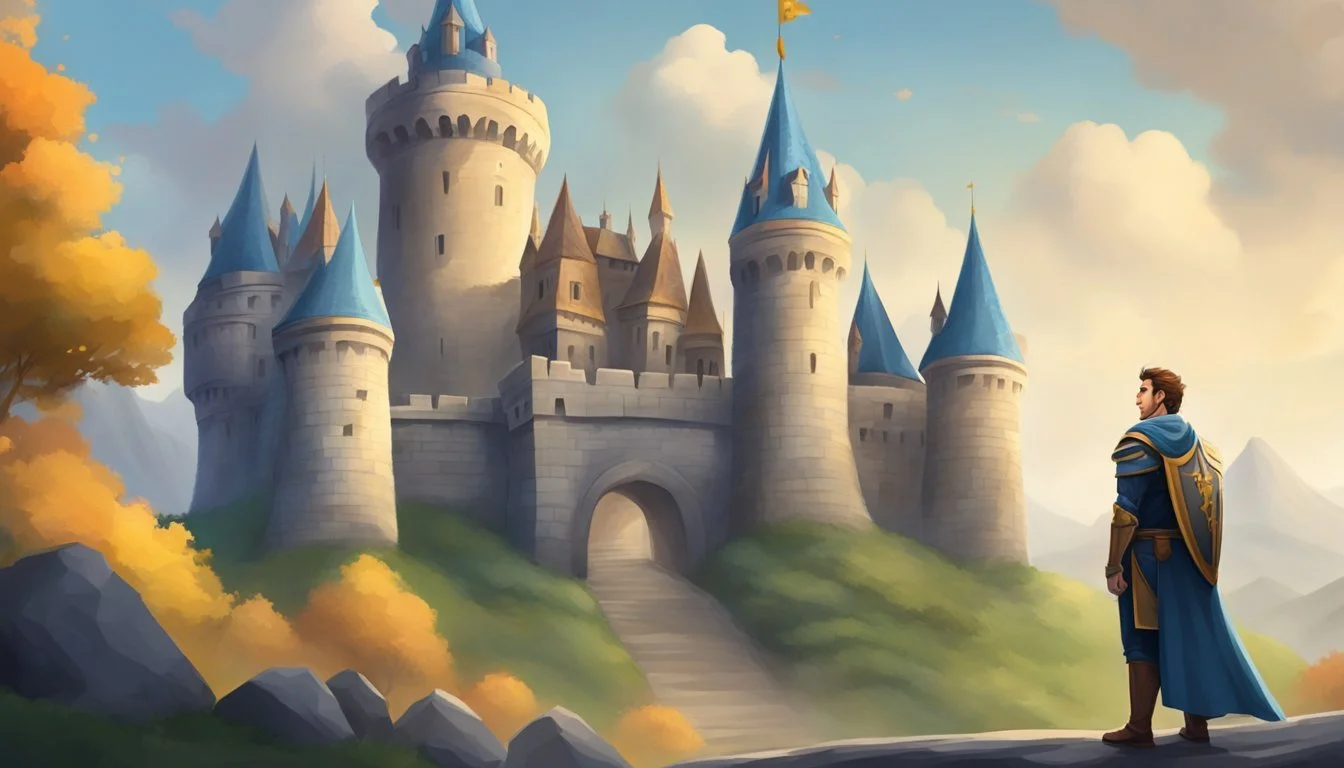Sorting Personality Types into Hogwarts Houses
Personality typing and the Hogwarts House system both aim to categorize individuals based on their traits and values. While the Myers-Briggs Type Indicator offers 16 distinct personality types, the Hogwarts Houses provide a simpler classification with just four categories. Each Hogwarts House represents a set of core values and characteristics that align with certain personality types.
The Sorting Hat's decision in the Harry Potter series mirrors real-world personality assessments, considering a student's traits, values, and potential. Gryffindor values courage and determination, Hufflepuff prizes loyalty and hard work, Ravenclaw admires intelligence and creativity, while Slytherin esteems ambition and resourcefulness. These house traits often correspond with specific Myers-Briggs types, creating intriguing parallels between the magical and psychological realms.
Understanding the connection between personality types and Hogwarts Houses can offer insights into individual strengths and values. It provides a fun and relatable way to explore personal characteristics, fostering self-awareness and appreciation for diverse traits in others. Whether one identifies as an INFJ Ravenclaw or an ESTP Gryffindor, these classifications offer a unique lens through which to view personal growth and interpersonal dynamics.
Overview of Hogwarts Houses
Hogwarts School of Witchcraft and Wizardry is divided into four distinct houses, each with its own unique traits and values. These houses play a crucial role in shaping students' experiences and identities throughout their magical education.
The Four Houses and Their Core Values
Gryffindor values bravery, daring, and chivalry. Students sorted into this house are known for their courage and willingness to take risks. The house colors are scarlet and gold, with a lion as its symbol.
Slytherin prizes ambition, cunning, and resourcefulness. Those in Slytherin often display strong leadership qualities and a drive to succeed. Their colors are green and silver, represented by a serpent.
Hufflepuff embodies loyalty, dedication, and hard work. Hufflepuffs are fair-minded and patient. Their house is represented by a badger, with yellow and black as their colors.
Ravenclaw values intelligence, wit, and creativity. Students in this house are known for their wisdom and love of learning. Their symbol is an eagle, with blue and bronze as their colors.
Historical Origins and the Sorting Hat
The four Hogwarts houses were established by the school's founders: Godric Gryffindor, Salazar Slytherin, Helga Hufflepuff, and Rowena Ravenclaw. Each founder sought to nurture specific traits in their students.
The Sorting Hat, a magical artifact created by the founders, determines which house best suits each new student. During the sorting ceremony, the hat analyzes the student's personality and potential, placing them in the most appropriate house.
This centuries-old tradition helps create a sense of community and friendly competition among students. House points are awarded for achievements and can be deducted for rule-breaking, fostering a balance of individual and collective responsibility.
Personality Types Defined
Personality types provide frameworks for understanding individual differences in behavior, preferences, and cognitive styles. These systems categorize people based on key traits and tendencies.
Myers-Briggs Type Indicator (MBTI)
The MBTI is a popular personality assessment based on Carl Jung's theories. It categorizes people into 16 personality types using four dichotomies:
Extraversion (E) vs. Introversion (I)
Sensing (S) vs. Intuition (N)
Thinking (T) vs. Feeling (F)
Judging (J) vs. Perceiving (P)
Each type is represented by a four-letter code (e.g. INTJ, ESFP). The MBTI aims to identify preferences in how people perceive information and make decisions.
Proponents believe it offers insights into strengths, communication styles, and potential career fits. Critics argue it lacks scientific validity. Many organizations use it for team building and self-reflection exercises.
Keirsey's Temperament Sorter
David Keirsey developed this system based on observable behaviors. It groups the 16 MBTI types into four temperaments:
Artisans (SP types): Spontaneous, practical, freedom-loving
Guardians (SJ types): Responsible, traditional, security-seeking
Idealists (NF types): Imaginative, empathetic, growth-focused
Rationals (NT types): Logical, strategic, knowledge-seeking
Keirsey emphasized core motivations and values over cognitive functions. His work explores how temperaments influence leadership styles, relationships, and learning preferences.
The system aims to predict behavioral patterns and improve mutual understanding between different types. It's used in counseling, education, and organizational settings.
Matching Personality Types to Hogwarts Houses
The four Hogwarts houses each embody distinct traits that align with various personality types. These connections help explain why certain individuals gravitate towards specific houses.
Gryffindor and Its Associated Personality Traits
Gryffindor values bravery, courage, and daring. ENFJ and ENFP types often find themselves drawn to this house due to their bold and charismatic nature. ENFJs, with their natural leadership abilities, embody Gryffindor's chivalrous spirit. ENFPs, known for their enthusiasm and creativity, match the house's adventurous streak.
ESTPs and ISTPs, with their quick thinking and love for excitement, also fit well in Gryffindor. Their ability to remain calm under pressure aligns with the house's emphasis on nerve and daring.
Gryffindor's traits appeal to those who are outgoing, action-oriented, and willing to take risks for what they believe in.
Slytherin and Its Defining Characteristics
Slytherin house prizes ambition, cunning, and resourcefulness. ENTJ and INTJ personality types are often associated with this house due to their strategic thinking and drive for success. ENTJs, natural-born leaders, exemplify Slytherin's emphasis on ambition and determination.
INTJs, with their analytical minds and long-term planning skills, embody the house's cunning nature. ESTJs and ISTJs may also find themselves in Slytherin, as their practical approach and goal-oriented mindset align with the house's values.
Slytherin attracts individuals who are ambitious, confident, and willing to use their intellect to achieve their goals. The house values those who can navigate complex situations and come out on top.
Hufflepuff and Its Emblematic Traits
Hufflepuff is known for valuing hard work, patience, loyalty, and fairness. ISFJ and ESFJ types often resonate with this house due to their caring nature and strong work ethic. ISFJs, with their dedication to helping others, embody Hufflepuff's emphasis on kindness and loyalty.
ESFJs, known for their social skills and desire for harmony, match the house's focus on fairness and teamwork. INFPs and ISFPs may also find themselves in Hufflepuff, as their idealistic nature aligns with the house's values of kindness and acceptance.
Hufflepuff attracts those who prioritize relationships, community, and putting in consistent effort to achieve their goals.
Ravenclaw and Its Signature Attributes
Ravenclaw house values wit, wisdom, creativity, and intelligence. INTP and ENTP personality types are often drawn to this house due to their love for knowledge and innovative thinking. INTPs, with their analytical minds and desire for understanding, embody Ravenclaw's emphasis on wisdom and intelligence.
ENTPs, known for their quick wit and ability to see connections, match the house's focus on creativity. INFJs and INTJs may also find themselves in Ravenclaw, as their intuitive nature and intellectual curiosity align with the house's values.
Ravenclaw attracts those who seek knowledge for its own sake, enjoy solving complex problems, and approach life with curiosity and imagination.
Famous Characters and Their Houses
The Hogwarts houses are home to many iconic characters from the Harry Potter series. Each house reflects distinct personality traits and values that shape its members.
Heroes and Heroines of Gryffindor
Gryffindor house is known for bravery and chivalry. Harry Potter, the series' protagonist, exemplifies these traits through his courageous actions against Lord Voldemort. Hermione Granger, brilliant and daring, proves that intelligence and bravery can go hand in hand.
Ron Weasley's loyalty and willingness to stand by his friends in the face of danger mark him as a true Gryffindor. Albus Dumbledore, the wise and powerful headmaster, demonstrates that leadership often requires great courage.
Neville Longbottom's journey from timid student to brave leader showcases Gryffindor's ability to inspire growth and valor in its members.
Notable Slytherins and Their Ambitions
Slytherin house values ambition and cunning. Severus Snape, with his complex motivations and strategic mind, embodies these traits. His actions, while often morally ambiguous, are driven by deep-seated goals.
Draco Malfoy's struggle between familial expectations and personal ethics highlights the internal conflicts Slytherins may face. His character arc shows that ambition can lead to both negative and positive outcomes.
Lord Voldemort, the series' main antagonist, represents Slytherin's darkest potential. His relentless pursuit of power and immortality showcases unbridled ambition without moral constraints.
Hufflepuffs Known for Their Steadfast Nature
Hufflepuff house is characterized by loyalty and hard work. Cedric Diggory exemplifies these qualities through his fair play and dedication during the Triwizard Tournament. His actions demonstrate that Hufflepuffs value honor and justice.
Nymphadora Tonks, with her unwavering commitment to the Order of the Phoenix, shows Hufflepuff's bravery in the face of adversity. Her shape-shifting abilities mirror the house's adaptable nature.
Rubeus Hagrid, while sorted into Gryffindor, displays Hufflepuff traits in his steadfast loyalty to Dumbledore and his nurturing care for magical creatures.
Ravenclaws and Their Quest for Wisdom
Ravenclaw house prizes wit and learning. Luna Lovegood, with her unique perspective and intellectual curiosity, embodies the house's appreciation for unconventional wisdom. Her ability to see beyond the obvious demonstrates Ravenclaw's value of open-mindedness.
Cho Chang, intelligent and talented, represents the more conventional side of Ravenclaw's academic prowess. Her participation in Dumbledore's Army shows that knowledge and practical application go hand in hand.
Filius Flitwick, Hogwarts' Charms professor, exemplifies Ravenclaw's commitment to magical expertise and the pursuit of knowledge as a lifelong endeavor.
Practical Considerations
Understanding Hogwarts House traits can provide insights for personal growth and real-world applications. These characteristics offer a framework for self-reflection and development in various aspects of life.
Using House Traits to Foster Personal Development
House traits can serve as a guide for identifying strengths and areas for improvement. Gryffindor's bravery encourages individuals to face challenges head-on. Ravenclaw's wisdom inspires continuous learning and intellectual pursuits.
Hufflepuff's loyalty and hard work ethic can motivate people to cultivate stronger relationships and maintain persistence in their endeavors. Slytherin's ambition and resourcefulness can drive career advancement and goal achievement.
Self-reflection based on these traits helps individuals recognize their values and align their actions accordingly. This process facilitates personal growth and the development of a more well-rounded character.
Applying Hogwarts House Characteristics in Real Life
House traits can be applied to various real-life situations. In the workplace, Ravenclaw's analytical skills can be valuable for problem-solving roles. Hufflepuff's teamwork abilities are beneficial in collaborative environments.
Gryffindor's leadership qualities can be harnessed in management positions. Slytherin's strategic thinking can be applied to business planning and negotiations.
In personal relationships, understanding these traits can improve communication and empathy. Recognizing different strengths allows for better cooperation and mutual support.
Individuals can use house characteristics as a framework for setting personal goals and making life choices aligned with their values and strengths.
Conclusion
Personality types and Hogwarts houses share intriguing connections. The sorting process reflects deeper aspects of character beyond surface traits.
Both systems aim to categorize individuals based on core values and strengths. Gryffindor's bravery aligns with certain extroverted types, while Ravenclaw's intellect resonates with analytical personalities.
Hufflepuff's loyalty and hard work match well with service-oriented types. Slytherin's ambition corresponds to goal-driven, strategic personalities.
Yet these associations are not absolute. Any personality type can potentially belong to any house. Individual experiences and choices play a significant role in shaping one's character.
The intersection of personality typing and fictional sorting systems provides a fun lens for self-reflection. It encourages people to consider their values, strengths, and areas for growth.
Ultimately, both frameworks serve as tools for understanding human complexity. They offer valuable insights while reminding us that people are multifaceted and capable of growth beyond any single category.



